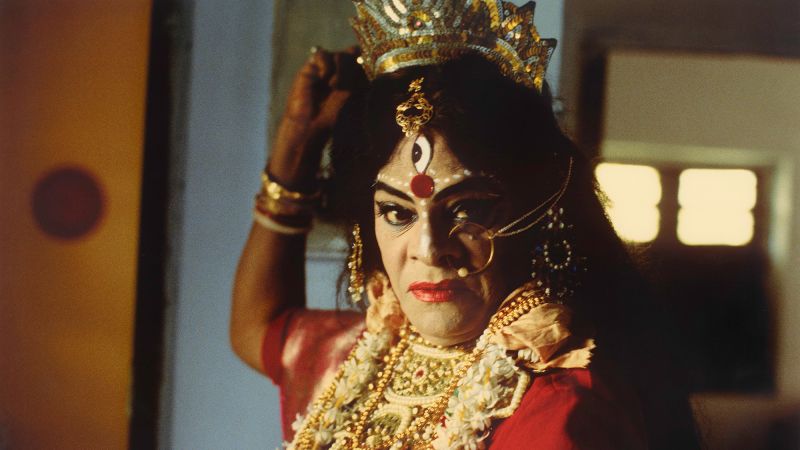
The last of Bengal’s female impersonators
CNN
Having long played female roles in traveling theater productions, Chapal Bhaduri struggled to find work after more women started performing in the 1960s and 1970s.
For Indian actor Chapal Bhaduri, the last man known to play female roles in Bengali folk theater, getting into character was both practical and ritualistic. He would put his hands together as if in prayer before applying makeup, drawing on eyebrows, affixing eyelashes and donning a bra, blouse, wig and golden jewelry. The application of a “third eye” on his forehead marked the completion of his transformation into Shitala, the Hindu goddess of ailments, including smallpox. An iconic photograph by the publisher and director Naveen Kishore — who brought Bhaduri’s story to the world through his celebrated 1999 documentary “Performing the Goddess: The Chapal Bhaduri Story” — captured this very moment, as the actor raises a performative arm and stares defiantly past the camera. “Until then, he is (a) man becoming a woman. With the third eye, he becomes the goddess,” Kishore told CNN in a video interview, adding: “Then there’s no more banter, no humor, no cracking jokes or singing in a bad voice.” Now retired and in his mid-80s, Bhaduri was considered the last female impersonator of “jatra,” a traveling musical theater tradition in Bengali-speaking parts of northeast India and Bangladesh. When he first joined a jatra troupe in the 1950s, men routinely performed in saris and makeup in lieu of women actors. Hailing from an acting family and using the stage name Chapal Rani, he became a prominent figure in the Calcutta (now Kolkata) theater scene. But Bhaduri found it increasingly hard to secure work after more women began partaking in jatra productions in the 1960s and 1970s. By the time he met Kishore, who was running a theater publication at the time, the actor was in his 60s and only performing a handful of times a year for the equivalent of $1 a night. The publisher and photographer shot a series of black-and-white images of Bhaduri getting into costume that were picked up by a curator and subsequently sold. Kishore gave the proceeds to Bhaduri, who later came to him looking for work, offering to cook or even make coffee. “I was in tears at my own inability…. because I saw him as a star, and I thought, ‘Why would I give him a job in a kitchen?’” Kishore recalled. “Then it struck me that all our friends in television and media wanted entertainment stories of this kind, but nobody was interested in sponsoring (them). So, I thought, ‘What if I spent money and made a talking-head documentary?’”













